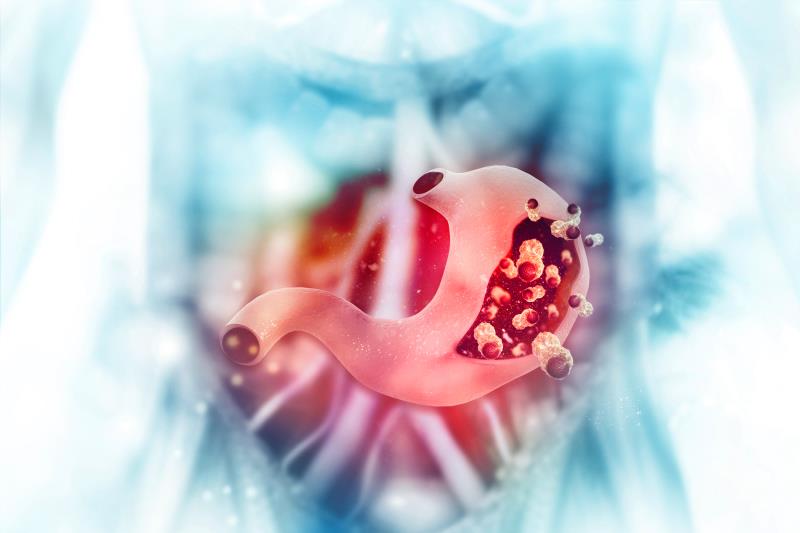
The combination of the monoclonal antibody pembrolizumab and a chemotherapy (CT) regimen consisting of S-1 plus oxaliplatin (SOX) showed encouraging efficacy and manageable safety as first-line treatment in patients with advanced gastric/gastroesophageal junction (G/GEJ) cancer, according to the cohort 1 results of the Japanese KEYNOTE-659* study.
“Although survival in [this patient group] has improved in recent years, prognosis is still poor … [F]urther improvements … are clearly needed,” said the researchers, citing trastuzumab as the only agent that has shown significant overall survival benefit to date in this patient setting. [Lancet 2010;376:687-697]
This phase IIb study evaluated pembrolizumab 200 mg + SOX** in 54 patients with advanced PD-L1-positive, HER2-negative G/GEJ tumours. Pembrolizumab was administered first as a 30-minute IV infusion Q3W, followed sequentially by oxaliplatin then S-1. Median follow-up was 10.1 months. [Eur J Cancer 2020;129:97-106]
As per blinded independent central review, objective response rate (ORR) and disease control rate were 72 percent and 96 percent, respectively. “[A majority of the patients] experienced a decrease from baseline in the sum of their target lesions. [Moreover,] the tumour size decreased compared with the size in the first assessment and continued to decrease over time,” explained the researchers.
Median progression-free survival (PFS) was 9.4 months. Six-month PFS rate was 67 percent.
More than half of participants (57 percent) reported grade ≥3 treatment-related adverse events (TRAEs), the most common being reduced platelet and neutrophil counts, colitis, and adrenal insufficiency. About 30 percent of patients had serious TRAEs. Most patients recovered with appropriate supportive care.
“For the first time, this study demonstrated the efficacy and tolerability of SOX with pembrolizumab [in this setting]. The ORR … and median PFS were … relatively favourable compared with those in previous phase II/III trials of SOX in Japan,” said the researchers. [Ann Oncol 2015;26:141-148; Int J Clin Oncol 2018;23:1084-1089] “[However,] cross trial comparison should be carefully interpreted because of different settings.”
Moreover, the findings cannot be interpreted as confirmatory given the small study sample and nonrandomized and open-label design, underlined the researchers, hence the need for further evaluation of this novel combination regimen before extrapolating the findings to a wider population.
Targeting the PD-1/PD-L1 pathway
On exploratory subgroup analyses based on PD-L1 combined positive score (CPS) status, ORRs were 74 percent and 71 percent in the respective groups of patients with CPS ≥1 to <10 and CPS ≥10, with no clear association between PD-L1 expression level and efficacy outcomes. “[These findings are] generally consistent with KEYNOTE-062*** … suggesting that the PD-L1 expression level might not be a robust predictive factor for pembrolizumab [+ CT in this setting],” noted the researchers. [J Clin Oncol 2019;37(suppl):LBA4007]
However, studies have identified PD-L1 expression in tumour and immune cells of patients with G/GEJ cancer. [Gastric Cancer 2019;22:69-76; Cancer Med 2018;7:2612-2620] “Therefore, the PD-1/PD-L1 pathway could play a critical role in tumour immune evasion for G/GEJ cancer, making it an attractive target for therapeutic intervention,” they said.
Several studies# are underway to ascertain the efficacy and safety of fluoropyrimidine + oxaliplatin combined with nivolumab or pembrolizumab in this setting, noted the researchers. “[R]esults from these studies [may] clarify the association between PD-L1 expression status and treatment efficacy of CT plus nivolumab or pembrolizumab,” they said.